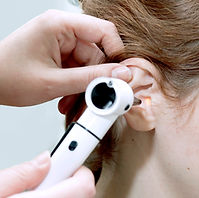
Sense of Touch: All About the Hands

This lesson contains affiliate links to products I have used and personally recommend. At no cost to you, I make a commission for purchases made through the links or advertisements. These commissions help to pay for the costs of the site and enable it to remain free for anyone who wants to use it.
Objectives:
-
Students will be able to identify the parts of the hand.
-
Students will be able to explain how nerve endings in the skin send messages to our brain allowing us to feel things.
-
Students will be able to identify the three areas of our body that contain the most touch receptors.
-
Students will be able to name and identify the locations of the three types of nerve receptors.
-
Students will be able to describe unknown objects by using only their hands.
Question that encompasses the objective:
-
Have you ever burned your hand?
-
What did it feel like?
-
Was it a good feeling or a bad feeling?
Prepare the Learner: Activating Prior Knowledge.
How will students prior knowledge be activated?
Warm up by asking students:
-
What do you know about your hands and your sense of touch?
Common Core State Standards:
-
CCSS.ELA-LITERACY.SL.2.1
-
CCSS.ELA-LITERACY.SL.2.1 B
-
CCSS.ELA-LITERACY.SL.2.4
-
CCSS.ELA-LITERACY.W.2.2
-
CCSS.ELA-LITERACY.W.3.2
-
CCSS.ELA-LITERACY.W.3.2 B
-
CCSS.ELA-LITERACY.SL.3.1
-
CCSS.ELA-LITERACY.SL.3.4
Materials and Free Resources to Download for this Lesson:
-
Introductory activity materials:
-
2 paper cups
-
Warm water
-
Cold water
-
-
“What Do You Feel?” activity materials:
-
8 containers (dark-colored so the students cannot see what is inside)
-
Wet sponge
-
Cotton balls
-
Sandpaper
-
Burlap
-
Velvet strip
-
Toy slime
-
Sticky paper
-
Glass pebble
-
Input:
What is the most important content in this lesson?
To reach this lesson’s objective, students need to understand:
-
The parts of the hand.
-
How nerve endings in the skin allow us to feel things.
-
How the hand and the brain work together to determine how an object feels.
-
How certain feelings can protect us from harm (i.e., pain/stings/burns)
-
The parts of the body that contain the most touch receptors: fingertips, lips, and toes,
How will the learning of this content be facilitated?
-
Prior to the start of the lesson, fill two paper cups with water. One cup should be filled with cold water and the other should be filled with warm water. Set them on a desk in the front of the classroom.
-
Begin the lesson by explaining to the students that you have two cups filled with water. Ask for two student volunteers to come up to the front of the room to be a part of introductory activity. Place one student in front of the cup with cold water and the other in front of the cup with warm water. Do not tell the students the temperature of the water. Have the student standing in front of the cold-water cup place two fingers into the cup. Wait for a reaction and then ask the student what the water felt like. Repeat with the warm water. Have the student volunteers return to their desks and then discuss the activity with the entire class. Explain that the students’ sense of touch helped them determine the temperature of the water.
-
Continue the discussion about the sense of touch by explaining the nerve endings in the skin. The skin has many sense receptors that tell a person if the object they are touching is wet, dry, rough, smooth, hot, cold, sharp, or dull. The sense of touch is very important, as there are many objects in the world that are dangerous (i.e., hot stoves, knives, pins, broken glass). The nerve receptors in the hand send messages to the brain that will warn you if an item is dangerous. We rely on our sense of touch and our brain to protect us from harmful objects. Your brain determines if an object is dangerous and it eventually separates the dangerous and non-dangerous messages. This is why when you cut your finger you feel instant pain, but are not aware of the shoes or clothing you are wearing. Although there are touch receptors all over our body, the most receptors are found in our lips, fingertips, and toes. Our nerve receptors and our brain work closely together.
-
Expand on the subject by explaining the names of the different touch receptors in the body. Hand out the “Nerve Endings” worksheet. If it is possible, project the “Nerve Endings” worksheet onto the board using a projector or put into a PowerPoint document and project so that the students can label each picture as the teacher explains.
-
Meissner Endings: located just below the layer of the skin; respond to very light touches
-
Merkel Endings: located near the surface of the skin; respond to slow vibrations
-
Free Nerve Endings: located at the surface of the skin; respond to hot, cold, and pain
-
Ruffini Endings: located deeper in the skin; respond to stretching, squeezing, and temperature
-
Pacinian Endings: located very deep in the skin; respond to pressure and vibrations
-
[Information Source: http://www.dkfindout.com/us/human-body/senses/touch/].
-
-
After the “Nerve Endings” worksheet is explained, the students will participate in the activity “What Do You Feel?” Throughout the room, there will be eight containers. Each container will be filled with a different item. The students will go around the room and touch the items inside the containers. Each student will get a “What Do You Feel?” observation sheet. As the students go around the room, they will fill in the “I think this object is…” box. Allow the students to work for about 10-15 minutes. Reconvene and discuss when the students are finished. The students will then fill in the third box of the worksheet, “I was correct/ incorrect”
-
The final assessment will be for the students to answer the question:
-
Think about what you learned in class today about the sense of touch. Why is touch important? How does our sense of touch help protect us from harm? What do we rely on to help us identify the object we are touching? How would your life be different if you didn’t have a sense of touch?
Time/Application
3-5 minutes
Guided Introduction
Review the class/ agenda with the students:
-
Introductory Activity (hot and cold water cups)
-
Discussion of the sense of touch/ “Nerve Endings” worksheet
-
Activity: “What Do You Feel?”
-
Discussion of Activity
-
Independent Assessment
10 minutes
Introductory Activity:
-
Have two paper cups filled with water (one warm and one cold) on a desk in the front of the classroom.
-
Have two student volunteers come up to the front.
-
Have each student place his or her fingertips into the cup of water.
-
Discuss student reactions.
15 Minutes
Touch Discussion/Nerve Endings Worksheet
-
Discuss how our sense of touch helps to warn us of danger.
-
Discuss the touch receptors.
-
“Give each student a nerve endings worksheet.
-
Tell the students that as each part is explained, they should label it onto their worksheet.
-
Name each nerve receptor; tell the students where it is located, and what it responds to.
15 Minutes
Activity: “What Does it Feel Like?”
-
Set up eight containers filled with items around the room.
-
Give each student a “What Does it Feel Like?” observation sheet.
-
Instruct the students to walk around the room and place their hand in each container. Have the students write their observations on their sheet.
-
At the end of 15 minutes, have the students return to their desks and discuss their observations.
Closure/Assessment
10 minutes
Activity: “What Does it Feel Like?”
-
Set up eight containers filled with items around the room.
-
Give each student a “What Does it Feel Like?” observation sheet.
-
Instruct the students to walk around the room and place their hand in each container. Have the students write their observations on their sheet.
-
At the end of 15 minutes, have the students return to their desks and discuss their observations.
-
As an independent assessment, the students will answer the question:
-
Think about what you learned in class today about the sense of touch. Why is touch important? How does our sense of touch help protect us from harm? What do we rely on to help us identify the object we are touching? What do you think it would be like if we didn’t have a sense of touch?
-
Appropriate answers should include (but will vary):
-
Our sense of touch is very important. Without our sense of touch we wouldn’t be able to determine if an item is safe or not. If we touch something that has not been filtered by our brain as “safe”, we will be warned by experiencing pain. Nerve receptors are very important because when we touch something, it sends a message to our brain. Our brain determines if the item is safe or harmful. If we didn’t have our sense of touch, we would have to rely more on our other senses.
-
-
If there is additional time, discuss questions from the touch activity.
Individualized Instruction/Scaffolding
English Language Learners will be supported in this lesson through data-based heterogeneous grouping, verbal and written repetition of new vocabulary words, and multiple representation of vocabulary words through printed images and video.













